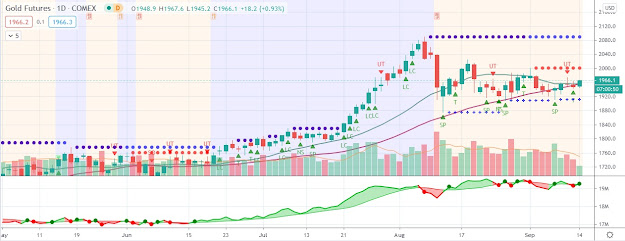Mr. Buffett is wrong when he implies gold is a bubble
The gold price climbed $14.66, or 0.8%, to $1,782.01 per ounce Tuesday after two key U.S. economic reports came in below expectations. The price of gold added to its gains after durable goods for January showed a 4.0% decline, well below the 1.0% drop economists were expecting. The Case-Shiller 20-City Index on home prices showed a 4.0% fall in December, below the 3.7% consensus estimate among economists. Silver rallied alongside the gold price, by $0.74, or 2.1%, to $36.14 per ounce
On Monday the gold price received attention from one of the world’s most famous investors, Warren Buffett. In an interview with CNBC, the “Oracle of Omaha” reiterated his disdain for the yellow metal because it is not a productive asset. “This type of investment requires an expanding pool of buyers, who, in turn, are enticed because they believe the buying pool will expand still further,” Buffett contended. “Owners are not inspired by what the asset itself can produce – it will remain lifeless forever – but rather by the belief that others will desire it even more avidly in the future.”
Following Buffett’s interview, investment firm QB Asset Management (QBAM) published a note that vehemently disagreed with the legendary investor. “Gold is not an asset and is not meant to be procreative,” QBAM wrote. “Above all else it is a currency, like US dollars, and its daily spot pricing reflects its exchange rates with currencies currently being issued by global central banks on behalf of their host governments and used as media of exchange. Gold is not currently a medium of exchange (although to some people it remains a store of purchasing power vis-à-vis other currencies currently in use as exchange media). Thus, in today’s fiat monetary system gold is simply potential money and its spot price indicates the degree to which global wealth holders are willing to handicap the possibility that the future purchasing power of central bank-issued currency will be diluted against it.”
“Mr. Buffett is wrong when he implies gold is a bubble (like Tulips),” QBAM added. “In fact, in spite of all the noise there is very little sponsorship of gold today relative to financial assets. As indicators, the value of the world’s largest gold ETF is one-fifth the market capitalization of Apple, and total precious metal exposure represents just 0.15% of global pension asset.”
QBAM went on to say that “Mr. Buffett is again wrong in arguing gold needs more avid buyers to keep the bubble inflating. It does not, and in fact we think it is unlikely there will be many buyers relative to financial asset holders as time goes on. Rather, we believe the price of gold will increase in fiat terms with or without widespread secondary market endorsement precisely because central banks must increase their monetary bases to de-lever their banking systems, which in turn de-values the currencies in which leverage is denominated.”
On Monday the gold price received attention from one of the world’s most famous investors, Warren Buffett. In an interview with CNBC, the “Oracle of Omaha” reiterated his disdain for the yellow metal because it is not a productive asset. “This type of investment requires an expanding pool of buyers, who, in turn, are enticed because they believe the buying pool will expand still further,” Buffett contended. “Owners are not inspired by what the asset itself can produce – it will remain lifeless forever – but rather by the belief that others will desire it even more avidly in the future.”
Following Buffett’s interview, investment firm QB Asset Management (QBAM) published a note that vehemently disagreed with the legendary investor. “Gold is not an asset and is not meant to be procreative,” QBAM wrote. “Above all else it is a currency, like US dollars, and its daily spot pricing reflects its exchange rates with currencies currently being issued by global central banks on behalf of their host governments and used as media of exchange. Gold is not currently a medium of exchange (although to some people it remains a store of purchasing power vis-à-vis other currencies currently in use as exchange media). Thus, in today’s fiat monetary system gold is simply potential money and its spot price indicates the degree to which global wealth holders are willing to handicap the possibility that the future purchasing power of central bank-issued currency will be diluted against it.”
“Mr. Buffett is wrong when he implies gold is a bubble (like Tulips),” QBAM added. “In fact, in spite of all the noise there is very little sponsorship of gold today relative to financial assets. As indicators, the value of the world’s largest gold ETF is one-fifth the market capitalization of Apple, and total precious metal exposure represents just 0.15% of global pension asset.”
QBAM went on to say that “Mr. Buffett is again wrong in arguing gold needs more avid buyers to keep the bubble inflating. It does not, and in fact we think it is unlikely there will be many buyers relative to financial asset holders as time goes on. Rather, we believe the price of gold will increase in fiat terms with or without widespread secondary market endorsement precisely because central banks must increase their monetary bases to de-lever their banking systems, which in turn de-values the currencies in which leverage is denominated.”




Comments
Post a Comment